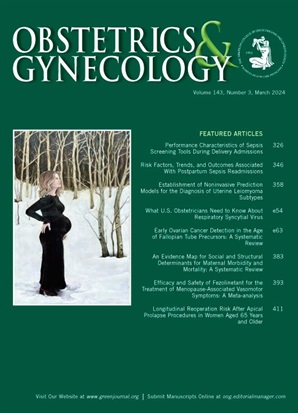围绕产科种族差异导航对话的临床医生观点。
IF 4.7
2区 医学
Q1 OBSTETRICS & GYNECOLOGY
引用次数: 0
摘要
目的围绕产科中种族差异的讨论发生在不同的领域,包括媒体、社区和医疗机构。然而,这些讨论是否以及如何发生在医患关系的背景下是未知的。我们试图探索临床医生的观点,与患者对话关于种族差异在孕产妇保健使用定性方法。方法:我们于2023年8月至2024年3月在一个学术卫生系统内的两家医院招募围产期临床医生(N=14),有目的地根据自我认同的种族或民族和角色进行抽样,直到主题饱和。使用健康公平实施框架的半结构化访谈评估了差异咨询的先前经验和优化,重点关注患者-临床医生的种族一致性、舒适度、障碍、理想环境,并推荐了关于孕产妇健康中种族差异的对话内容。访谈由两名具有高互信度(κ>0.8)的编码器采用内容分析方法编码。结果临床医生普遍认识到种族,特别是种族主义对美国产妇结局的影响。关于种族差异的讨论最频繁地出现在:1)当黑人患者表达对死亡的恐惧或对他们的治疗存在偏见的担忧时,或2)在推荐阿司匹林降低先兆子痫风险的背景下。黑人临床医生对这些讨论感到更自在,归因于生活经验和实践。尽管大多数临床医生同意与患者就种族差异进行对话是重要的,但他们也发现了一些障碍,如对患者反应的恐惧(尤其是种族不一致的患者)、时间限制和不明确的可采取的应对措施。结论:我们的研究结果,以及正在进行的对患者观点的研究,强调了以患者经历为中心的尊重、知情的对话的必要性。随着对种族差异的认识日益加深,围产期临床医生必须培养建设性地讨论种族问题的能力,实践以关系为中心的护理,并促进黑人患者的心理安全。本文章由计算机程序翻译,如有差异,请以英文原文为准。
Clinician Perspectives on Navigating Conversations Around Racial Disparities in Obstetrics.
OBJECTIVE
Discussions around racial disparities in obstetrics occur in varied silos including the media, communities, and medical institutions. Yet, whether and how these discussions occur in the context of the patient-clinician relationship is unknown. We sought to explore clinician perspectives on conversations with patients regarding racial disparities in maternal health using a qualitative approach.
METHODS
We enrolled perinatal clinicians (N=14) across two hospitals within one academic health system from August 2023 to March 2024, purposively sampled by self-identified race or ethnicity and role until thematic saturation was achieved. Semistructured interviews using the Health Equity Implementation Framework evaluated prior experience with and optimization of disparities counseling, focusing on patient-clinician race concordance, comfort levels, barriers, ideal circumstances, and recommended content for conversations about racial disparities in maternal health. Interviews were coded with a content analysis approach by two coders with high interrater reliability (κ>0.8).
RESULTS
Clinicians universally recognized the effect of race, specifically racism, on U.S. maternal outcomes. Conversations about racial disparities most frequently arose 1) when Black patients voiced fears of dying or concerns about bias in their care or 2) in the context of recommending aspirin for preeclampsia risk reduction. Black clinicians felt more comfortable with these discussions, attributed to lived experience and practice. Although most clinicians agreed that conversations with patients about racial disparities are important, they identified barriers such as fear of patient reactions (particularly with discordant race), time constraints, and unclear actionable response.
CONCLUSION
Our findings, along with ongoing work on the patient perspective, highlight the need for respectful, informed conversations centering patient experiences. As awareness of racial disparities grows, perinatal clinicians must develop capabilities for discussing race constructively, practicing relationship-centered care, and promoting psychologic safety for Black patients.
求助全文
通过发布文献求助,成功后即可免费获取论文全文。
去求助
来源期刊

Obstetrics and gynecology
医学-妇产科学
CiteScore
11.10
自引率
4.20%
发文量
867
审稿时长
1 months
期刊介绍:
"Obstetrics & Gynecology," affectionately known as "The Green Journal," is the official publication of the American College of Obstetricians and Gynecologists (ACOG). Since its inception in 1953, the journal has been dedicated to advancing the clinical practice of obstetrics and gynecology, as well as related fields. The journal's mission is to promote excellence in these areas by publishing a diverse range of articles that cover translational and clinical topics.
"Obstetrics & Gynecology" provides a platform for the dissemination of evidence-based research, clinical guidelines, and expert opinions that are essential for the continuous improvement of women's health care. The journal's content is designed to inform and educate obstetricians, gynecologists, and other healthcare professionals, ensuring that they stay abreast of the latest developments and best practices in their field.
 求助内容:
求助内容: 应助结果提醒方式:
应助结果提醒方式:


